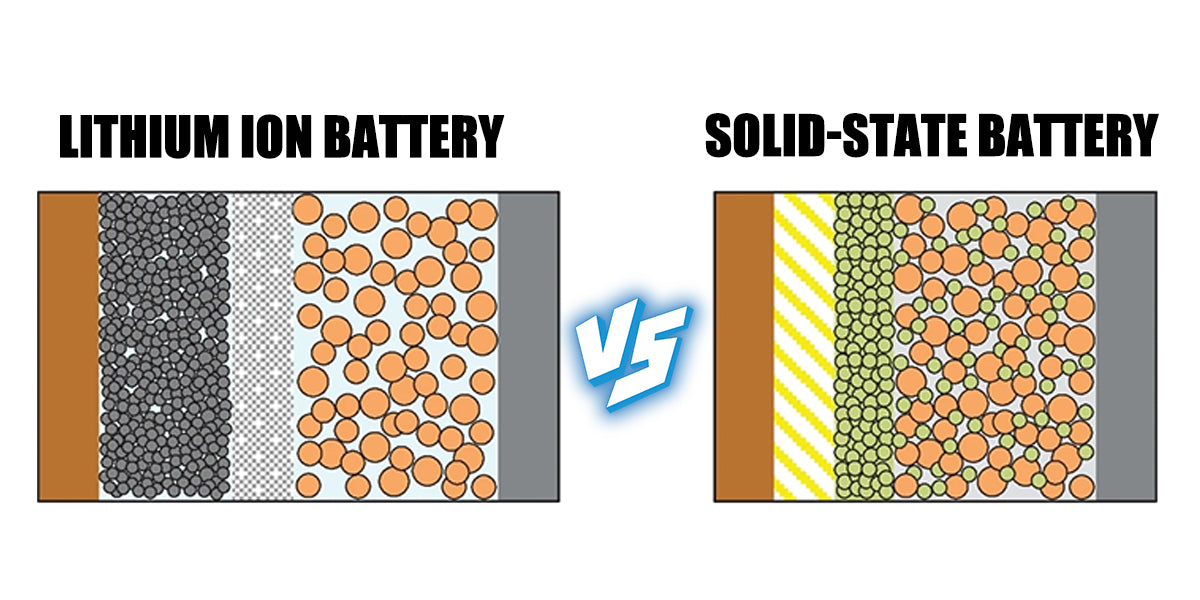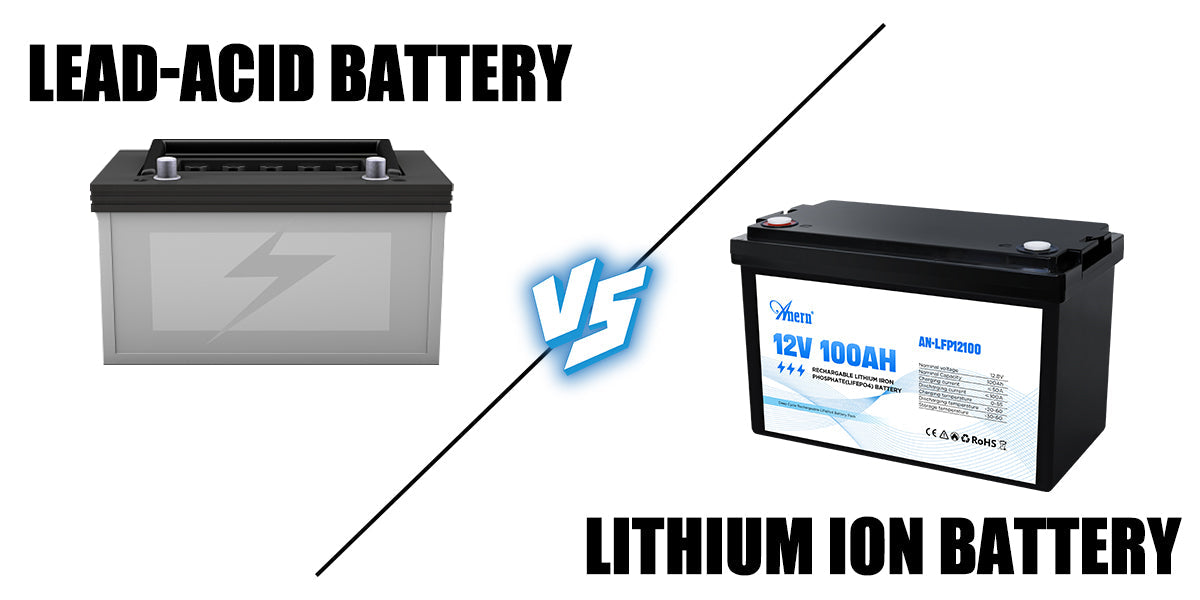Making the choice to go solar is a smart move. You're tapping into a free, clean source of energy. But getting the most out of your panels means storing that power effectively. For a long time, lead-acid batteries were the standard option, but today, a newer technology has become the go-to choice for good reason: the LiFePO4 lithium battery.
If you’ve started shopping around, you've probably noticed that LiFePO4 batteries have a higher price tag. That's enough to make anyone pause. This guide is here to walk you through the whole story, looking beyond the initial cost to show why upgrading your solar storage to LiFePO4 is a genuinely smart investment for the long run.
What's the Difference Between Solid-State and LiFePO4?
You don't need a chemistry degree to understand the key difference here. It’s actually quite simple. Every battery has three main parts: two electrodes and an electrolyte that helps move energy between them.
- A LiFePO4 (Lithium Iron Phosphate) battery, the current standard for home storage, uses a liquid electrolyte.
- A Solid-State battery, as its name suggests, uses a thin, solid material as the electrolyte.
This single change from a liquid to a solid is what all the hype is about. In theory, using a solid electrolyte could lead to some amazing benefits, which is why it’s often called the future of home battery technology. The promise includes:
- Higher Energy Density: The ability to pack much more energy into a smaller, lighter space.
- Enhanced Safety: With no liquid to leak or burn, they are potentially even safer.
- Longer Lifespan: The potential to last for even more charge and discharge cycles.
These are exciting possibilities, but they lead to the most important question of all for a homeowner today.
What's the Real-World Availability of Solid-State Batteries for Homes?
This is the most important question for anyone looking to buy a battery in 2025, and the answer is straightforward.
The short answer is no. As of today, you cannot go out and buy a commercially available solid-state battery for your home energy storage system. Here’s the situation in 2025:
- Still in Development: The technology is still in the research, development, and early prototype stage.
- Focus on Electric Vehicles (EVs): The world’s top engineers and scientists at companies like Toyota, Samsung, and QuantumScape are working hard on it, but their primary focus is on creating small batteries for future EVs, not home storage.
- Major Production Hurdles: The challenges of producing these batteries at a large scale, at a reasonable cost, and with proven long-term reliability are immense.
Think of it like seeing a futuristic concept car at an auto show. It looks incredible and promises to change everything, but you can’t walk into a dealership and buy one.
For homeowners in 2025, solid-state batteries are that concept car. They represent an exciting future, but they are not a product you can purchase for your home today. The discussion of Solid-State vs. LiFePO4 for a home purchase right now begins and ends with this fact.

Why Is a LiFePO4 for Home Energy Storage a Safe Bet in 2025?
So, with solid-state off the table for now, what about today's leading technology? Is buying a LiFePO4 battery a smart move, or will it be obsolete in a few years? This is a key concern, and the answer is reassuring. Choosing LiFePO4 for home energy storage in 2025 isn't settling; it's making a mature and confident investment for several key reasons:
- Proven and Reliable: LiFePO4 technology has been on the market for over a decade, constantly being refined and improved. It’s a known quantity. You get predictable performance, a long lifespan, and the backing of years of real-world use in millions of homes.
- Affordable and Accessible: Because LiFePO4 batteries have been manufactured at a massive scale for years, the costs are reasonable and the supply chain is stable. You can choose from numerous trusted brands and have a system installed right away. This is a stark contrast in the Solid-State vs. LiFePO4 comparison, where one is available now and the other is still years away.
- Safe and High-Performing: LiFePO4 is already incredibly safe. It is widely known as the safest and most stable type of lithium-ion battery, with an extremely low risk of thermal runaway. The performance it offers today, from its cycle life to its efficiency, is more than capable of meeting the energy needs of a modern home for the next 10 to 15 years. It is the right tool for the job, available today.
A Practical Comparison: What’s the Best Lithium Battery for Your Home in 2025?
Let's put everything we've discussed into a simple, side-by-side comparison to make the decision crystal clear. If you are making a choice this year, these are the factors that matter.
| Feature for a 2025 Purchase | LiFePO4 (The "Now" Choice) | Solid-State (The "Future" Hope) |
| Availability to Homeowners | Excellent. Widely available from many manufacturers. | None. Not commercially available for residential use. |
| Upfront Cost | Affordable. Mass production has made it cost-effective. | Extremely High / Unknown. Currently in R&D, not priced for consumers. |
| Proven Track Record | High. Over a decade of proven, reliable performance. | None. Still in the testing and prototype phase. |
| Practical Choice Today | Yes. The only viable, proven, and sensible option on the market. | No. A promising technology to watch for the future. |
The Smart Decision Is Reliability You Can Install Today
So, when you step back and look at the whole picture, the choice in the Solid-State vs. LiFePO4 discussion becomes much clearer. The future of home battery technology is incredibly bright, and solid-state batteries will likely play a huge role in it someday.
However, for a homeowner looking to gain energy independence, lower electricity bills, and secure backup power in 2025, the decision is straightforward. The debate over Solid-State vs. LiFePO4 is a debate between a future promise and a present-day solution.
Choosing a LiFePo4 lithium battery today isn't a compromise. It is the most informed, financially sound, and practical decision you can make. You are investing in a mature, safe, and powerful technology that delivers real value the moment it's installed. Don't put your energy independence on hold for a technology that's still years away. You can invest wisely today and enjoy the benefits immediately.
FAQs about Lithium Battery Choice for Your Home
Q1: If I buy a LiFePO4 system now, can I just swap the cells for solid-state ones in the future?
It's highly unlikely to be a simple "cell swap." Battery systems are deeply integrated. The Battery Management System (BMS) and potentially the inverter are specifically calibrated for the voltage, current, and charging profiles of LiFePO4 chemistry. A future solid-state battery will have different characteristics, likely requiring a complete system upgrade rather than a simple drop-in replacement.
Q2: How do LiFePO4 and solid-state batteries handle extreme temperatures?
LiFePO4 batteries are known for their thermal stability but can experience reduced performance in deep cold (below 0°C or 32°F). Solid-state technology shows great theoretical promise for operating across a much wider temperature range with minimal impact, a key goal for EV applications. However, this real-world performance at a commercial scale is still in the process of being validated.
Q3: Why are solid-state batteries coming to EVs before home energy storage?
The primary reasons are value and technical focus. For EVs, the high energy density of solid-state directly translates to a massive selling point: longer range. Home storage, however, prioritizes low cost-per-kilowatt-hour and proven high cycle life, areas where LiFePO4 is already extremely strong and cost-effective. The initial high cost of solid-state is more justifiable in a premium EV.





Leave a comment
All comments are moderated before being published.
This site is protected by hCaptcha and the hCaptcha Privacy Policy and Terms of Service apply.